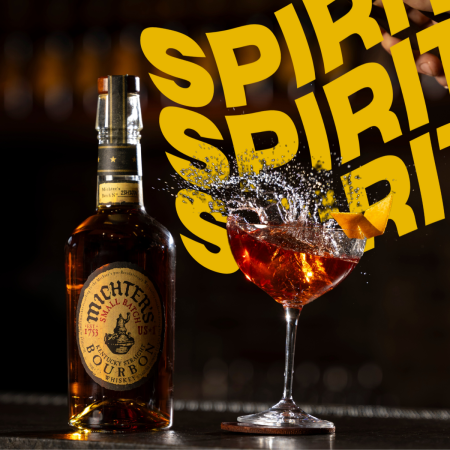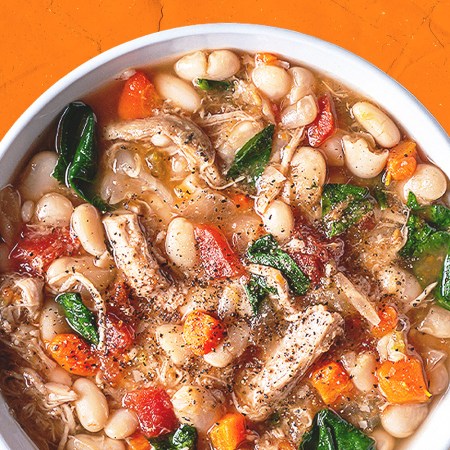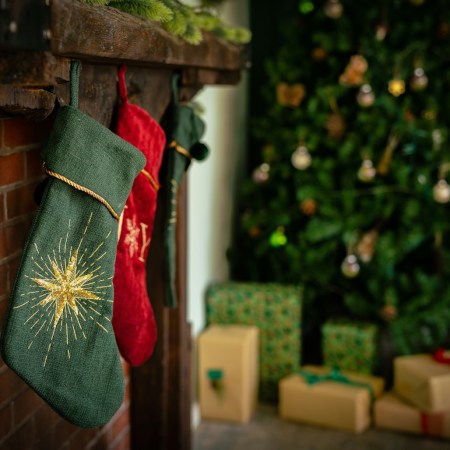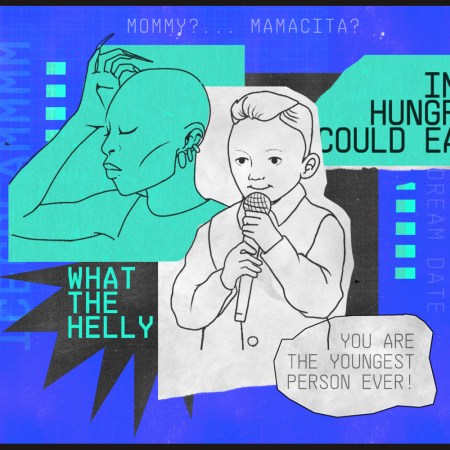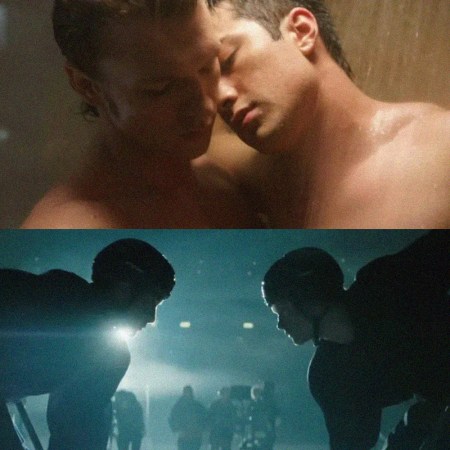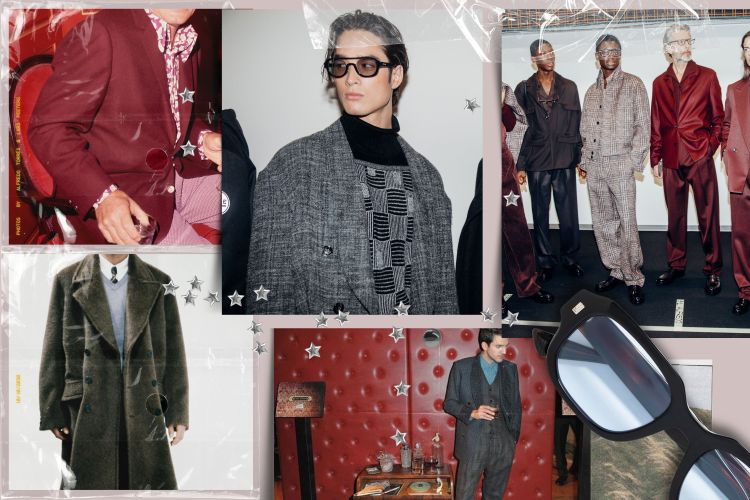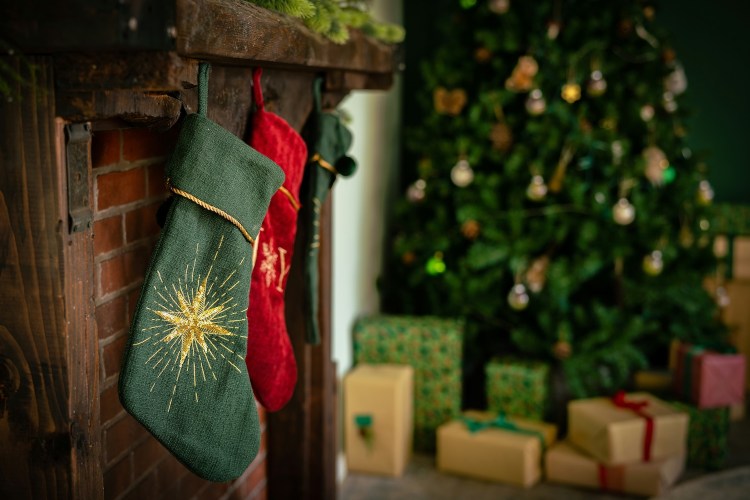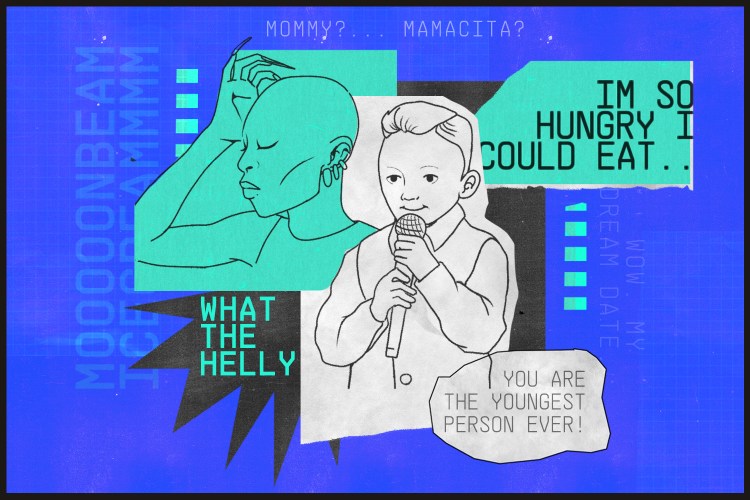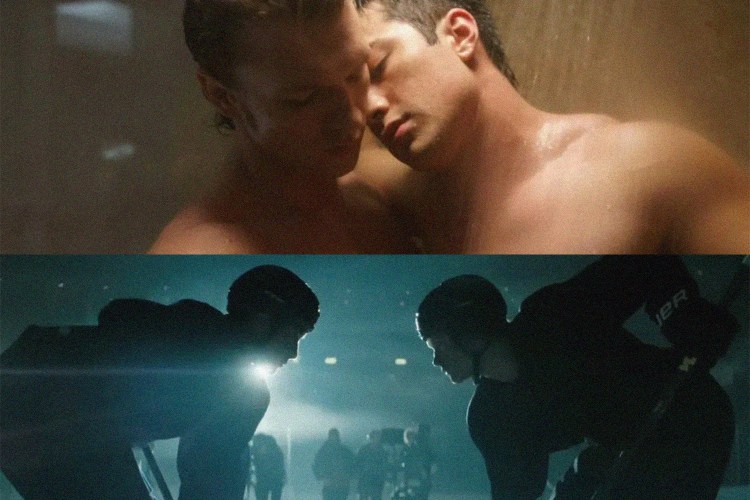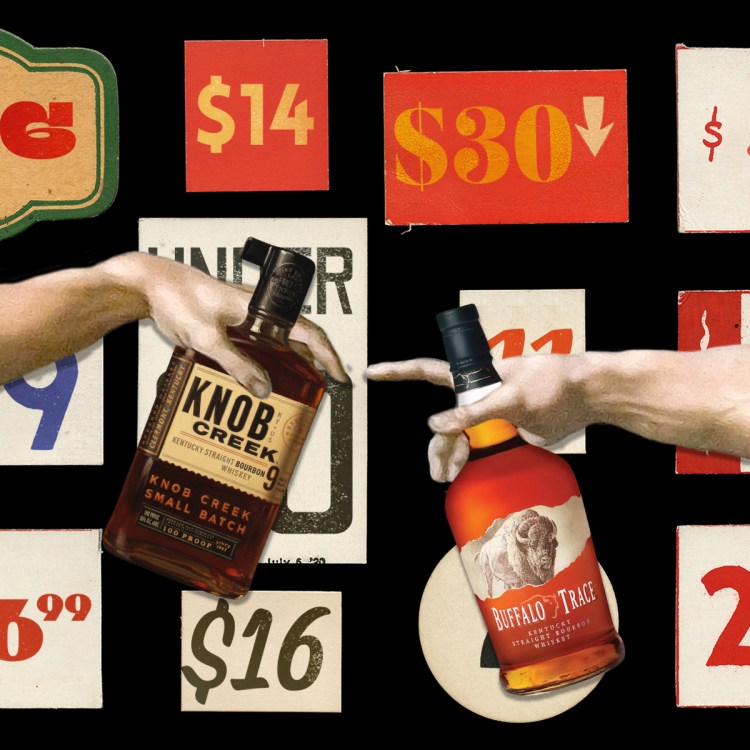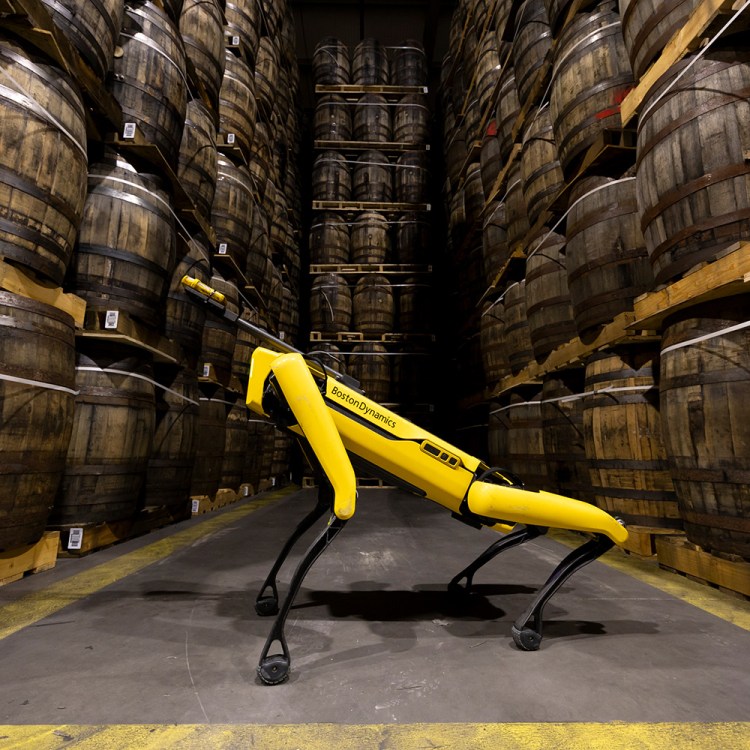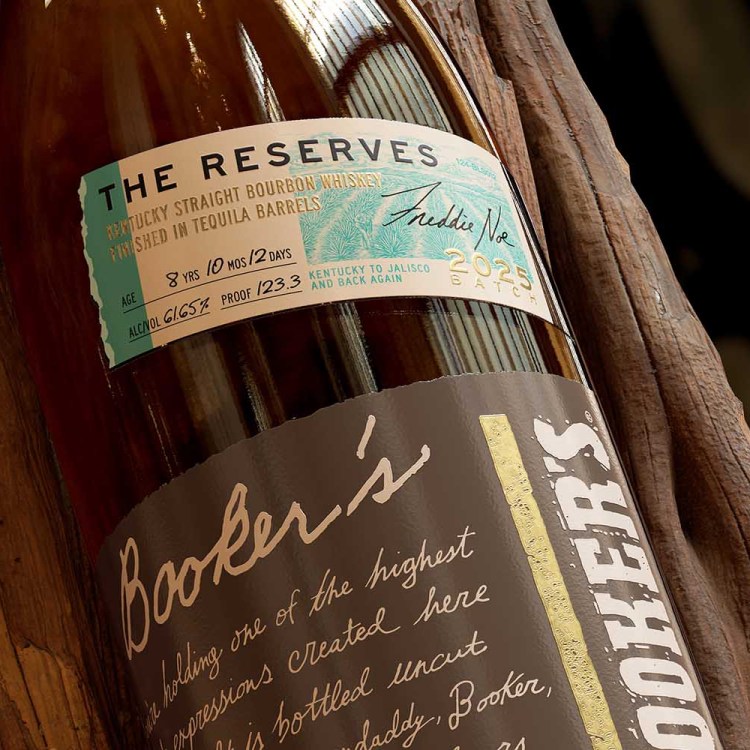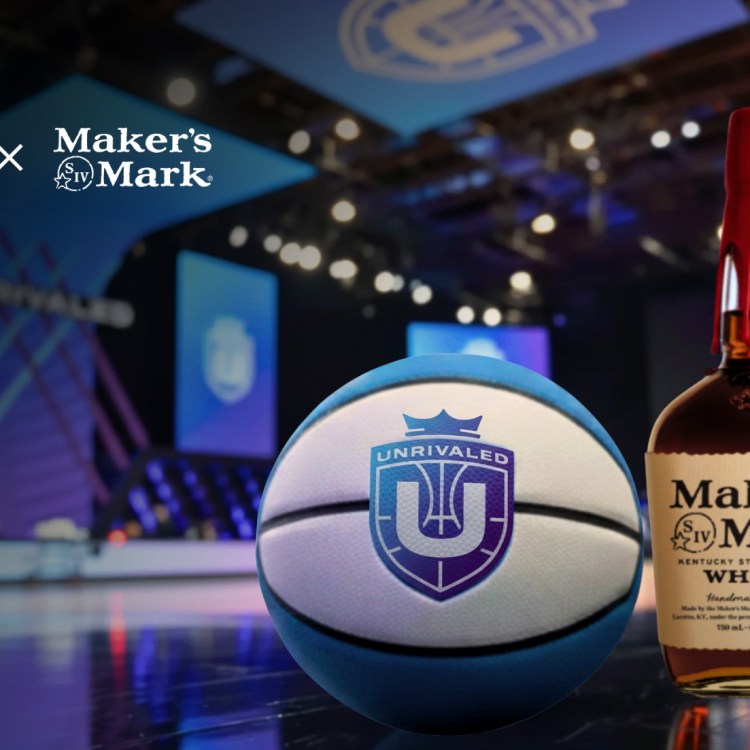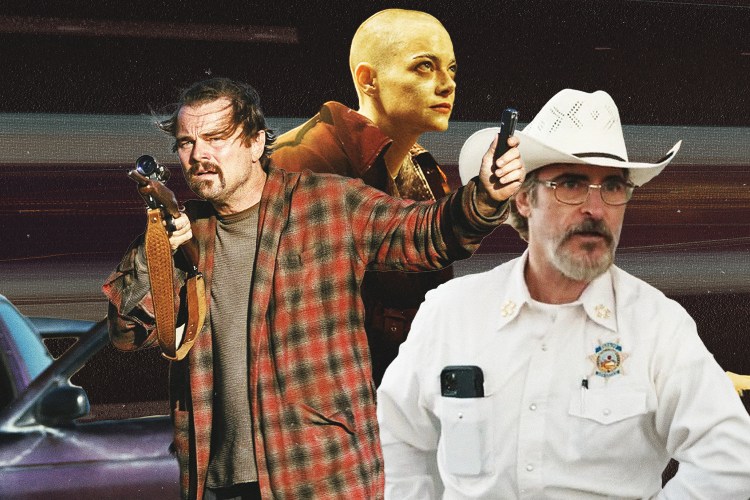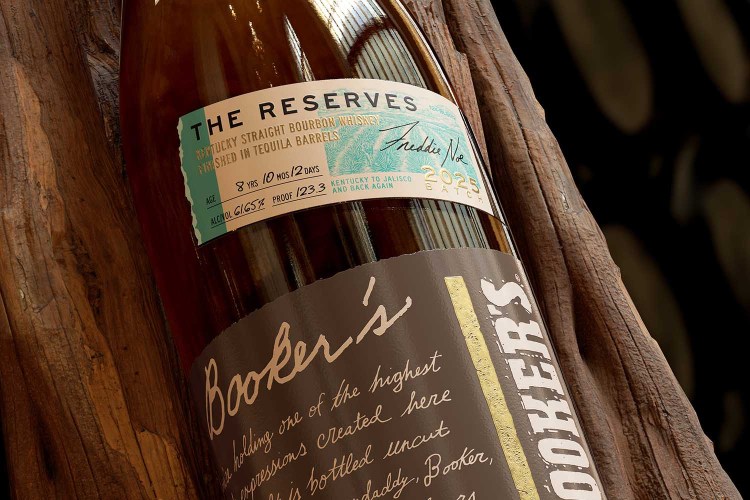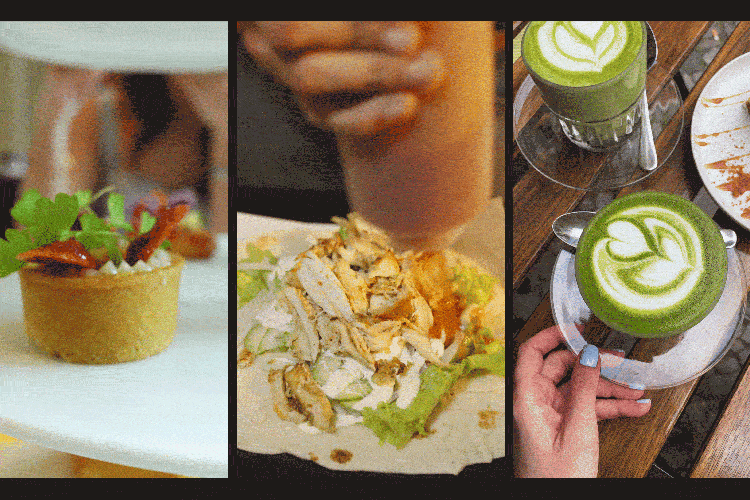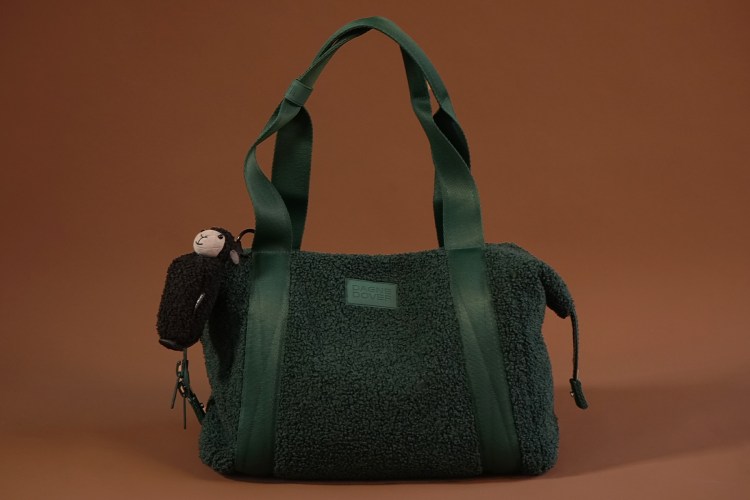This article is part of The Spill Awards 2025, covering the best in spirits, cocktails, bartenders and drinks culture. Find all of the stories here.
I first met Kitty Bernardo while sitting at a bar on a freezing February night. I’ve always been a fan of tiki cocktails, and Paradise Lost had already been open for a few months, but I had yet to pay my respects. As Kitty was walking through the menu and chatting with us for the next couple hours, all I could think was how they were one of coolest people I’ve ever met. And those drinks! So much flavor and creativity. By the time Kitty was done with us, I couldn’t even feel the cold, and we talked about those cocktails for weeks.
Over the past couple years, I’ve gotten to try many more of Kitty’s drinks and interviewed them about one of my all-time favorite tiki libations, the Cobra’s Fang. I’ve brought both New York and out-of-town friends to Paradise Lost because I think few bar teams are cooler or more creative than the one Kitty leads. And while we think they are already a great bartender, Kitty Bernardo is going to be a household name before long.
In a recent interview, Kitty and I talked about the important but oft-forgotten Filipino bartenders who helped create the tiki movement, what New Jersey would taste like if it were a cocktail, the perfect gin for a Dirty Martini and much more.
This interview has been edited for length and clarity.
InsideHook: I don’t think I actually know this — how did you get into bartending?
Kitty Bernardo: There were two movies that were really formative for me. The Matrix scared the crap out of me for the corporate world. I’m not a desk person at all, and from a very young age, I knew I wanted to do something creative. Then I saw Coyote Ugly, and it was bunch of women hanging out, doing something cool and having fun. Piper Perabo’s character is coming from New Jersey to pursue her dreams of being an artist in New York, and bartending is what helps her do that. I started in dive bars, and when I got my first dive job I was like, “Oh my God, I’m living the Coyote Ugly life.” I got so excited.
I started working in restaurants, and that’s when I got to see the creative cocktail side of things, going to bars like Death & Co and Amor y Amargo when I first started coming to the city. That’s what really solidified it. Cocktails are these amazing forms of expression and creativity. This is what I want to do with my life.
A place like Paradise Lost seems like the best of both worlds because it has these really creative, really sophisticated cocktails, but like Coyote Ugly there are lots of theatrics in tiki bartending.
It’s about being expressive and not taking yourself too seriously.

How did you jump into the tiki world from where you were?
Being Filipino, a lot of people had already roped me into the tiki world based off the way I look. But for the longest time, I was actually averse to tiki and I thought I was going to kill my career in New York before it even started. Because for someone who identifies as Filipino, queer, nonbinary, I’m part of those cultures that tiki takes from.
I didn’t realize this until I started working at Paradise Lost, but there’s a whole slew of Filipino bartenders whose names are lost to history because they were working in the background. They were behind the scenes working with people like Don the Beachcomber, and without Filipino culture, there is no tropical drinks scene and no tiki. When they first approached me about working at Paradise Lost, I asked them, “Do you know I don’t really like tiki as a thing?”
What made you change your mind?
They promised it was going to be different. The entire reason they decided to make Paradise Lost is because, being from California, they also had a strange love affair with the flavors and creativity but didn’t want to culturally appropriate. And they didn’t want to lean on that really problematic imagery that has become the norm.
I talked to St. John [Frizell] from Sunken Harbor Club about it too, and he gave me his vote of confidence. So I started talking to them more about this project, and I said, “Okay, you convinced me, but if anything happens, I’m outtie.” But they totally get it, so it’s become a really cool full circle moment.
It’s amazing to hear that Paradise Lost wants to ditch this very whitewashed version of tiki and go back to its roots. What are some ways you’re doing that?
First, it goes into the imagery. We’re not using the same Polynesian pop or type of kitsch that a lot of OG tiki bars use. We still have some of the elements like the straw and bamboo and, of course, the fire. But we wanted to explore different ways of creating immersion without having to rely on people of color, women’s bodies or other types of fetishization. Every time we do a staff training, we come back to the saying “Embrace the other.” Because the other is what was marginalized for so long.
Even when Ray [Sakover] was the beverage director before I took over the program, he would allow me the space to speak. He would allow me the space to go in-depth about the place that ingredients like pandan, mango and calamansi have within Filipino culture and how we got here today. For me personally, my own style of drinks-making has been trending towards that.
One of my personal favorite cocktails on the menu is the Shattered Conch, which you make with Spam-infused mezcal. I love Spam and know it’s really important to Filipino culture, and actually a lot of different cultures. How do guests react to it? Are people excited about it? Are they scared?
I think for a lot of people, it’s one of those fun, eye-catching, what-the-heck moments. They’re like, “Why would you use Spam?” And I’m sure it sounds crazy to people who are not as adventurous, but that’s one of those conversations I love having with people and training the staff up on. We have this deeper conversation about how everything we do is with intention.
It goes back to sharing childhood flavors I grew up with. Spam fried rice is the first dish I ever learned to make for myself because my Lolo, my grandfather, taught me how to make it. He said, “You are going to be an adult and you have to learn how to feed yourself.” And one of the ways you can feed yourself is by making rice and learning to stretch that rice out, learning how to reuse it so you always have a dish you can eat.

I think it’s a beautiful thing that your drinks start conversations and help people understand real tiki culture. What you’re doing behind the scenes drives this intention to educate people in a fun, interesting way and maybe help them ditch some of their prejudices. Have you seen this unfold at the bar? Have you changed someone’s mind about a particular ingredient?
For sure. Attack of the Banantulas has been one of my favorite drinks to serve because it’s sometimes difficult to sell. People see it’s made with banana, they see that it’s frozen and say, “Cool, I’m definitely on board.” And then, inevitably, they ask, “What is allium and why is it in there?” It’s a tincture we make out of red onion and garlic and they’re like, “Oh, gross.”
People don’t understand why we’d use those ingredients in a cocktail if it’s not something savory like a Bloody Mary. But you can barely taste it — it’s there to give nuance. The drink is based on the flavors of banana ketchup — you get your sweet, you get your banana, you get a little hint of ginger in there. Those flavors are very specific and very important to balance the drink. When people taste it, that’s when their reaction changes. They realize it’s not as savory as they were expecting, but it leaves you wanting another sip because you’re trying to chase that flavor. For other people, the alliums are overwhelming. But at the very least, they had a chance to try it, you know?
Oh, absolutely. And I’m sure for others they get really excited about seeing an ode to banana ketchup on the menu.
Yesterday, one of my managers recommended Attack of the Banantulas to a table. One of them thought the inclusion of alliums was really gross. But then the manager told them it’s because of the Filipino banana ketchup element. Four of the six people who were sitting at that table were like, “Wait, did you say Filipino banana ketchup?” because they were Filipino. And they ended up getting a round and were really excited because the FDA has actually banned Filipino banana ketchup in the U.S. now.
An Ode to the Cobra’s Fang, Tiki’s Most Interesting Cocktail
We dive deep into the tropical drink with our friends at Paradise LostWhy have they banned it? That’s crazy.
Yeah, they’ve banned that and this shrimp paste we make in the Philippines called bagoong. I think it’s because they don’t agree with the ingredients we use, the quality of those ingredients or the production. Several really important Filipino ingredients that create the foundation of our dishes have been banned in the U.S. That actually happened right around the time this drink launched on the menu. So it became, for me at least, doubly important to share and represent those flavors somewhere before they’re lost.
As someone who’s not Filipino, I didn’t know this. It’s such a shame that Filipino people living here can’t access that part of their food culture. But it’s wonderful that you’re able to recreate these flavors behind the bar. Are there any ingredients in this realm that you’re interested in playing around with right now?
Not to spoil anything for our summer menu, but the head bartender and I are combining two concepts for our next seasonal Old Fashioned: the elements of an old-fashioned, comforting barbecue with the flavors of a snack my mom still eats every now and then, green mangoes and bagoong, which is that second ingredient that’s been banned in the U.S.
You basically put together green, unripe mangoes and this really salty fermented fish paste. The mangoes are a little underripe, but you still want to use them and get those nutrients. So by dipping the green mango in bagoong, you get more flavor out of it. It’s kind of like when you use tahini on something or when you sprinkle a bit of salt on underripe fruit to dial up the sweetness. I’m really excited to emulate the flavors of that fermented shrimp paste in this new iteration of an Old Fashioned while still keeping the brightness of green mango and smokiness from the barbecue. And also having that conversation about what this ingredient is and why it’s important to Filipino culture.

This cocktail definitely sounds like it’s going to lean savory. Do you think the crazy popularity of the Martini these past few years has driven this savory cocktail renaissance?
Oh yeah, 100%. People are getting into their Dirty Martini bag, and I’m all for it. As a young bartender, I used to wax poetic about how if you wanted to do a Dirty Martini, you should do navy strength gin because all the botanicals and the high proof can stand up to the blah, blah, blah. Now I have seen the error of my sophomore bartender ways — you were a young bartender who’s had a couple of shifts, you know a little bit, so you’re kind of insufferable. We all go through the motions of being a little too big for our britches. Now, as a more seasoned professional, I’m just like, have that filthy, dirty, disgusting Martini you’re into. Have five ounces of olive brine and a dash of vodka, put Caesar salad dressing in there, put anchovies, put chunks of tuna.
Chunk it up!
Yeah! That’s when you start getting people to be creative. We want drinks to be fun. We want them to be engaging. And I think if the Dirty Martini craze (or any Martini craze) gets people interested in the world of cocktailing seriously and being more in touch with what those ingredients can do, then I’m 100% for it.
I’m running to get navy strength gin after this because honestly, a navy strength Dirty Martini sounds incredible. I don’t think I’ve ever had one before.
If you find a navy strength gin with the right balance of botanicals, it will complement the brine and transform the drink in a really beautiful way. You can make an amazing Gibson that way; Hayman’s Gin is perfect for it. That and Perry’s Tot have always been my go-tos for a Dirty Martini because they’re crisp and clean, but their botanicals shine through in a way that really complements any sort of brine or pickling solution.
I am so excited to try that, it sounds incredible. By the way, I was looking through your Instagram earlier and saw you recently did a pop-up at Hell or High Water Tiki in Denver.
Yeah, we did that with them in January.
I feel like in the past couple years, these collaborations between bars, both domestic and international, have been really popular. I think they’re amazing because they expose people to other cities’ cultures. Do you think this trend is going to keep growing?
I would love for it to continue and be a sustainable thing within our industry because, as you said, it gets people exposed to different bars and different styles of drinking culture. For example, if we can get Japanese bartenders here in America, it can expose people to something they may never have access to. Not everyone can afford a trip to Japan, but maybe someone in Philly can drive up to New York for a couple of hours and see some of these world-class bartenders for the first time.
Going to Hell or High Water was so fun and exciting because when you step back behind any bar, whether it’s down the block or across the world, you’re learning something new. You’re learning how to work within that space and seeing the way they prep and how their team interacts. This is how ideas grow and how we push the industry forward, for both the guest and for us as professionals. I think it’s a cool learning experience all-around and can only make our industry stronger. And it’s just really fun to hang out with your friends.
Is there something you learned at Hell or High Water that you brought back to Paradise Lost?
I wish we could put it into practice, but we don’t have the same real estate, but it was really cool to go into the underground, the belly of where they have their operations and prep because they have a really beautiful, well-organized space — like rows and rows of aisles in their basement with sections for glassware, seasonal glassware, booze for this particular bar, miscellaneous garnishes they’ve used throughout the years and don’t use anymore but they could use again if they wanted to.
Of course, being in New York City, we don’t have that same level of access to space. But that was something that stood out to me. If Paradise Lost ever expands and we have a basement full of space, we’re doing library rows and alphabetizing things like this. And it would be the coolest thing ever.
Oh, the luxury of space! Were you making drinks from the Paradise Lost menu at this pop-up?
We had our official Hell or High Water pop-up as Paradise Lost serving Paradise Lost drinks. But I ended up doing an unofficial-turned-official pop-up with my best friend, John, who works out there as well. It was based off New Jersey because we’re both from there. That was really cool to be able to do.
What ingredients did you use that were reflective of your home state?
One of my drinks was a fried gabagool fat wash, red sauce-clarified milk punch.
Oh my God. That’s my dream.
I think I flew too close to the Italian sun because it didn’t work out. It didn’t clarify the way I wanted it to, so it didn’t look as elegant as I wished. But it still tasted good. I’m definitely going to revisit that concept. But we were able to execute a New Jersey-themed Hurricane riff called the Brook Township because that’s a shore town. That, for us, was just so fun and ridiculous.
That is another favorite tiki drink of mine, the Hurricane. Correct me if I’m wrong, but the original was just rum, passionfruit syrup and lemon, right? Very simple.
Yeah, I believe so. Honestly, the Hurricane is a drink I end up making and drinking more than I have researched unfortunately.
It’s such a fun one. Obviously Pat O’Brien’s version is very sweet, but it still has this place in culture. And I think it really mirrors the history of tiki in general. There are so many riffs, a lot of original recipes and ingredients that got changed over time.
I think at the time, maybe they were just making fun drinks and using what they had. With [the Hurricane] being made in New Orleans, it was a lot easier to get rum from the South than it was to get whiskey from other places. And it was a lot cheaper, too. So we might as well throw this rum into a drink with some fassionola.
I don’t think anyone ever really sets out to make the next big cocktail, we just end up finding ourselves with these drinks that are undeniably timeless. For me personally, it’s cool to go to Attaboy and get a Penicillin or go around New York and see all these people making the Naked and Famous, and to know that the people who made them are still walking among us and hanging out and drinking at our bars. It’s cool to be part of this history but to also look back and see how all those things were made.
Oh, I agree. Obviously the cocktail renaissance started in the early aughts, but it’s grown and blossomed and it’s so beautiful. Looking ahead, where do you see tiki’s future going?
I think the modern tiki bar is leaning into what can be done with the space itself. I think places like Paradise Lost, Mothership and Sunken Harbor are all testaments to this, where we can create immersive and adventurous spaces without having to lean on the same old imagery that’s been used before.
Tiki was based on people’s travels — Don the Beachcomber traveled around the world and was exposed to all these flavors he didn’t grow up with, and he brought them back with him. For someone like me, who grew up in the U.S. and Filipino, these are not exotic flavors to me; they have always been around. But the tiki scene is about embracing the other and realizing not everyone has the same palate or grew up with the same cultural references. So to bring that to the forefront and explore flavors that differ from the original creator’s palate and use that in the realm of tiki drinks, I think that might be the next forefront along with immersive spaces.
The whole reason for living, at least for me, is to be exposed to other people’s cultures and try new things, whether that’s through food, travel or the like. I think cocktails are such a fun and beautiful way to expose people to that.
It creates these really necessary and important conversations with people to learn something new, learn something about someone who looks different from you. I would hope that in creating these fun drinks, these silly drinks, these drinks that are tasty, at the end of the day, we’re having those conversations and sitting with people who are different from us and learning a little bit more. I think these silly little drinks stand for something and will hopefully make us stronger together.
Every Thursday, our resident experts see to it that you’re up to date on the latest from the world of drinks. Trend reports, bottle reviews, cocktail recipes and more. Sign up for THE SPILL now.






